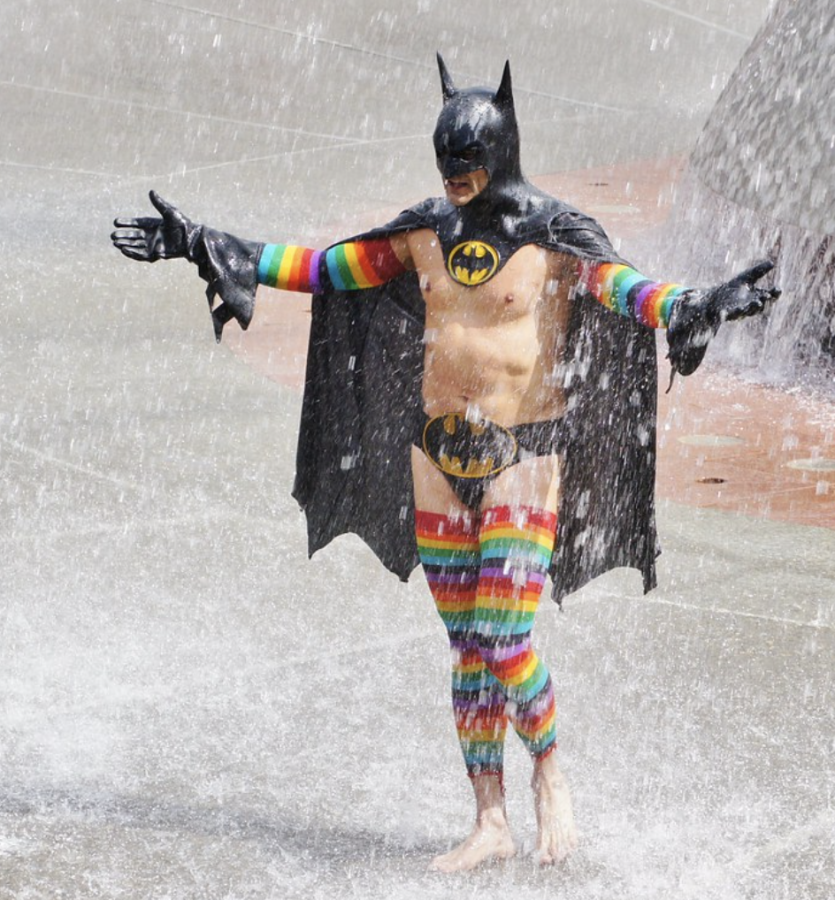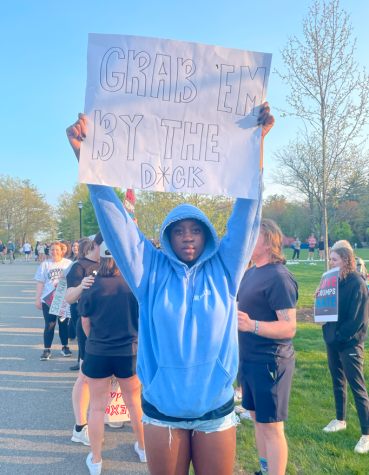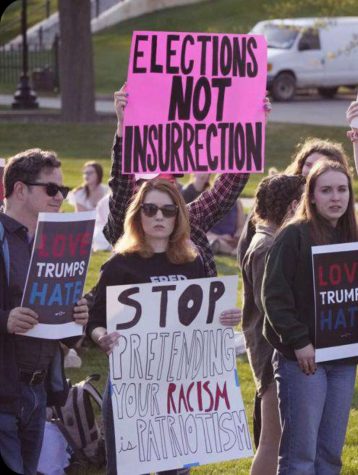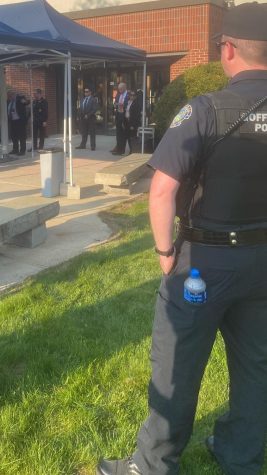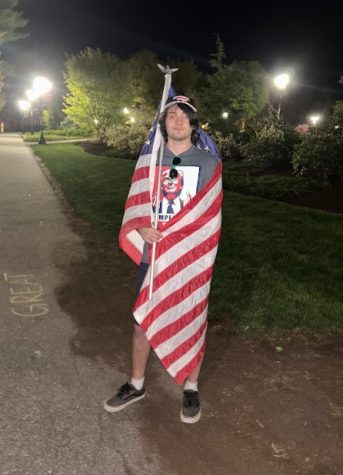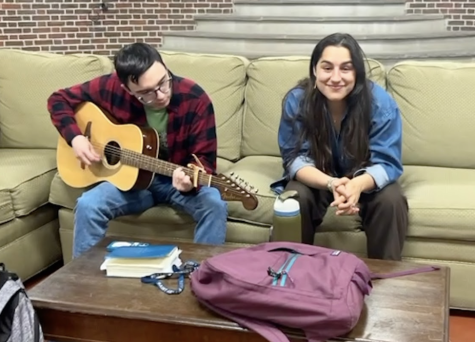The repressed homosexuality of Batman
Batman is all things all things to all people, as demonstrated by Samuel and photo. (Courtesy / FLICKR)
May 4, 2023
It would not be controversial to say that Batman is kind of gay. But why is the origin of this imputed homosexuality? Is it the form-fitting spandex? The perpetual bachelor lifestyle? The fact that Bruce Wayne’s only confidants are also confirmed bachelors: one, who seems to possess a preternatural lifelong devotion for Bruce and his expensive hobbies, and the other, the so-called ‘boy wonder’, whose claim to fame is wearing of short-shorts over tights?
But let us not confuse the man, Bruce Wayne, with the Bat. After all, the Batman is a symbol. As the Caped Crusader says in Christopher Nolan’s 2008 adaptation, The Dark Knight, “I’m whatever Gotham needs me to be,” or something like that anyway. Of course, “what Gotham needs” is an inherently subjective inquiry, whose answer is shaped by the specific outlook of the Bat Brain. For Tony Meatballs of the Parmesano crime family, Gotham needs more organized crime. For the Joker, Gotham needs more absurdist, clown-themed terrorist activity. For Batman, the answer might be ‘order’, ‘safety’, ‘no criminal scum’, or some other pedantic and fascistic statement. Though, on second thought, it is hard to imagine that safety is the goal of the Batman, when the Batmobile crushes twenty cars a night, and the Batcopter is firing incendiary missiles into high-density population areas. I assume this constitutes a war crime.
If, in its purest form, the Batman is a symbol of violently enforced order, specifically the destructive kind of order that is willing to destroy the good to root out the perceived evil, perhaps we can understand the sexual connotations of the symbol of the Batman as that of repressed homosexuality. Considering the sexual metaphors behind Bruce Wayne’s lifestyle, it becomes clear that Bruce lives a double life–’in the cave’, so to speak. He is a suave, opulently wealthy womanizer by day, and a violent masked vigilante by night, spending the hours of darkness in Gotham’s underbelly, wrestling with muscular men.
Of course, no one can know Bruce’s secret, and indeed, he puts on the mask to perpetuate the established social order, which he views as crumbling under the bulk of poverty and ‘corruption’. He sees a necessity to combat ‘criminality’ on its own level, while, for the sake of society, maintaining a facade, which in the context of our analysis is the facade of heteronormativity. He has no reservations in his personal descent into illegal activity, which he views as necessary for the greater good, except, seemingly, intentional killings. Bruce, therefore, acquits himself with these mental gymnastics, that he is not ‘one of them’. The act of ‘killing’ someone has a long history as a sexual metaphor, especially in terms of piercing or stabbing. Batman’s typical refusal to use a gun might be understood as a stand-in for another object with projectile capabilities. Instead, Batman uses his skill in manual grappling and superior toys to disarm those possessing firearms and incapacitate them, though not without engaging in lengthy marital disputes. Disputes, however, which end without the climactic discharge of the killing shot.
A quick look at Batman’s main enemies reinforces these conclusions. The Joker, as both a reflection and antithesis of Batman himself, evokes in his method and presentation everything that Batman cannot or will not do. He is the flamboyant, purple suit and makeup-wearing ‘Clown Prince of Crime’, who functions primarily, as the late Heath Ledger’s well-known interpretation says, as “an agent of chaos.” He will kill for sport, and seems to participate in crime for the mere enjoyment. He is ‘out’ in every sense of the word, and breaks out of Arkham Asylum repeatedly despite the social order enforced by Batman and legally established wielders of physical violence. The general penchant for absurdist crimes and whacky personae is shared by most of Batman’s most recognizable villains: the Penguin, the Riddler, Mr. Freeze, to name a few. The motley antisocial front crashes against the devastatingly monochromatic bulwark of the established order.
The female nemeses of the Batman, such as Catwoman or Poison Ivy, reinforce these conclusions. All fit the femme fatale archetype–equating female promiscuity and sexual assertiveness with both sexual and physical danger for men. Generally these women-criminals attempt to flirt with the Bat in order to destabilize his resolve, but their efforts are repelled by his stoic demeanor. This type of woman is exactly the same sort that the playboy, Bruce Wayne, has on his arm during the day. However, to Batman, sexually assertive women represent the same threat to society as other ‘criminals’. On a personal level, they are threatening because of his disguised distaste for their female sexuality, which Bruce must combat alongside his disguised attraction to male sexuality on account of the twofold nature of his existence.
The lens through which one must look into the Batverse is naturally shaded by the metaphorical Batbrella of its titular character. Therefore, having observed all this, we can see that Bruce Wayne’s subjective reality is formed by the conflict between perceived criminality and the enforcement of ‘correct’ order. Yet, to effectively combat said ‘criminality’ one must enter into criminality himself. Bruce’s person is really two masks, one of the other: Bruce Wayne, a mask for the Batman, and the Batman, a mask for Bruce Wayne. Both are ultimately plagued by inertia because each must hold to maintain the other. Batman can never stop being Batman because of the unstoppable regenerative force of the criminal front, either giving rise to new characters, or simply returning after escaping captivity. Bruce Wayne can never receive peace in his life because he cannot reveal his secret identity to anyone and risk being called a criminal himself. In any case, I hope this goes toward answering the question of what’s so gay about everyone’s favorite urban guerilla-warfare-waging-defender of socioeconomic disparity.


